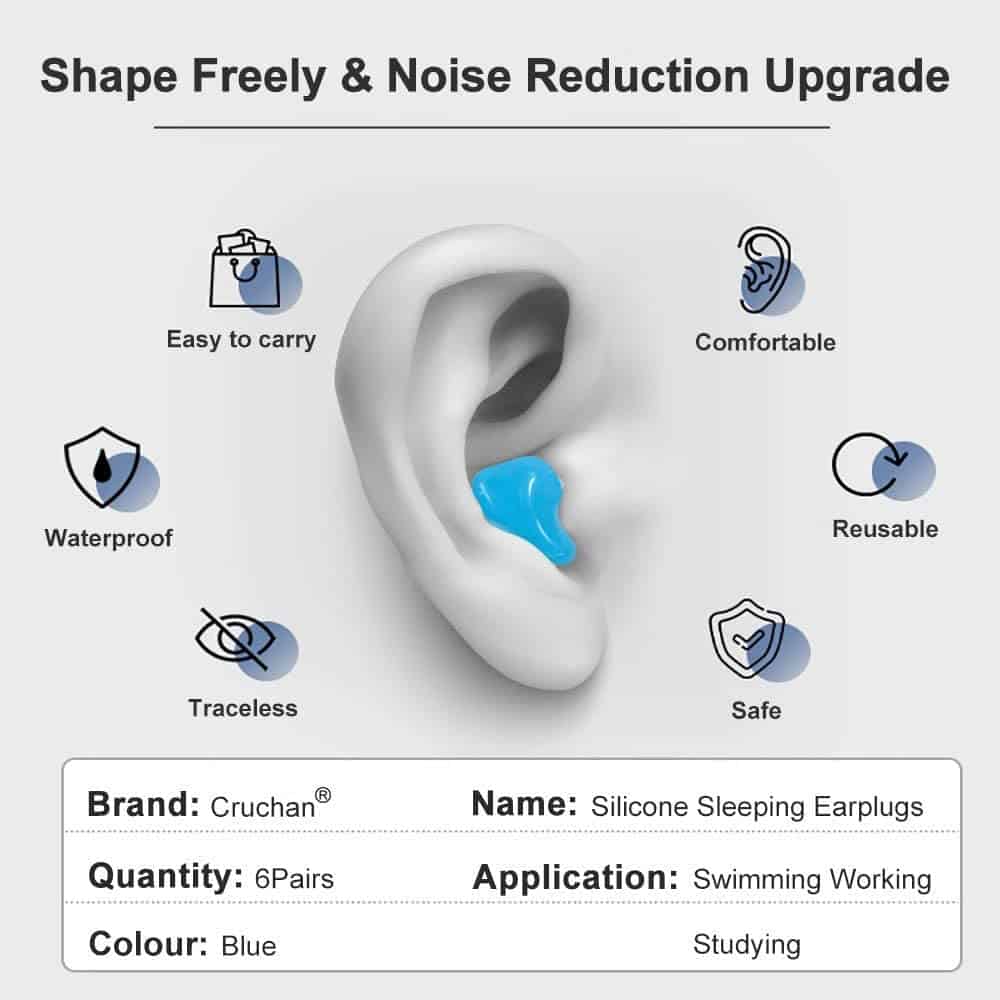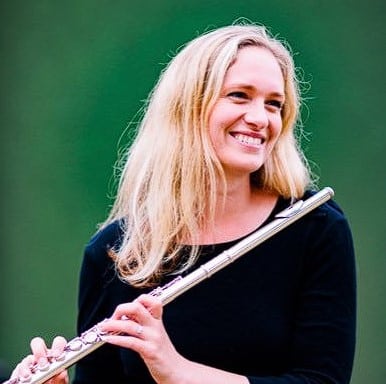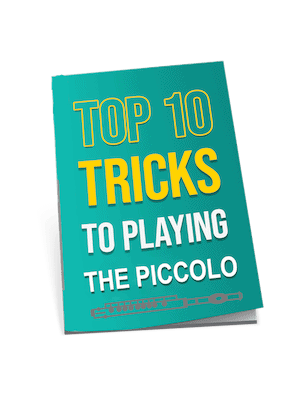Learning the Piccolo can be tough, but also one of the more brilliant musical instruments to play. That’s why we thought a summary of 10 tips of how to play Piccolo would help.
The size of the instrument can make Piccolo playing tricky. Although it’s a brilliant woodwind instrument, similar to the flute, the embouchure is more difficult to achieve than the flute embouchure. Much more air flow is needed to pass through the instrument to produce the higher notes in the upper register.
So what is the simplest way to start? How do you keep having a great time whilst maintaining progress?
Just a matter of practice, practice, practice!
So here is a set of 10 tips for learning Piccolo.
Use earplugs for loud practice
ONE
Challenge Yourself
TWO
Playing a musical instrument like the Piccolo is like going exploring. It only truly seems like it’s been worthwhile when you find something new.
However, to uncover a new challenge you need to look in new places, focus on something totally new and speak to new people.
A terrific way to make this happen is by engaging with the Piccolo community via a regular magazine, online forum, or YouTube channel. Our Ted’s List Facebook VIP Group has a lot of musicians that help and support each other; so come and join that.
A magazine, for instance, will have new columns and tips for you to read each month and many of the writers give out small weekly lessons complete with new exercises to try and enable you to improve.
Online discussion boards will have discussions between different piccolo players on a number of subjects. Watch out though. These can get pretty heated sometimes!
And a good YouTube channel will post completely new video tutorials each week for you to work through. If you haven’t done it yet, check out the Ted’s List YouTube channel, where we have 100’s of video lessons on all musical instruments.
Mastering a new challenge will broaden your horizons whilst keeping you determined to further improve.
Film yourself and watch back
THREE
Filming yourself can be brutal but is definitely worth it. You can check on things like:
- Fingering
- Intonation
- Sound
- Your lip (embouchure position)
- Your tone
It helps to have a tuner handy when playing back the music, to check your pitch. All woodwind players occasionally suffer from intonation issues, especially when they start playing, so don’t worry about it!
Make sure you warm up
FOUR
Try starting or ending your practice with some breathing warm-ups – with or without your piccolo. Not only will this improve your breath control but it is also very relaxing – think of it the same way as meditation or mindfulness! Always warm up your body before you start to practice piccolo – do a few simple shoulder and neck stretches before you play and your body will thank you for it!
Exercise
FIVE
You can do finger exercises without your instrument! Try lifting one finger at a time whilst resting your hand on a desk to improve finger dexterity. Useful if you’re bored in a meeting or during a maths lesson!
Play with others - or at least a recording
SIX
Play along with a recording to practice orchestral excerpts. It’s much more fun than playing alone! And if you want to see the main difference between the Flute and Piccolo, watch this great little video, filmed at Abbey Road Studios:

Decide a target for each practice session
SEVEN
Perhaps you plan to focus on dynamics, tuning, or phrasing. This helps you practice more efficiently so you don’t get stuck in a rut.
If you wish to play well then you’ll have to practice well, and it’s tips of this nature that’ll produce the world of difference to your playing. If you want to practice well, then you’ll need to learn what to practice!
A well-structured practice schedule provides you with support and focus during those valuable practice hours. It will ensure you don’t waste your energy and time trying to figure out what to practice, looking at Twitter, or just generally wasting time.
To start with, shut down your telephone (or at a minimum, place it on Do Not Disturb).
Next, get yourself comfortable. Have your glass of water, your mug of tea (or whatever drink you need) ready, and waiting.
Then, structure your practice routine. Have a seat and tell yourself “today I’m going to concentrate on my sound and tone”. Or possibly “I need to look after my bottom lip, so I’ll be checking my intonation at all times to see if my embouchure is correct”. Or even “I’m so used to playing the flute, that I need to concentrate on blowing as much air as possible through the instrument to build my stamina”.
It doesn’t really make any difference what exactly it is, as long as it’s a conscious thought from you with a macro-aim.
Try to remember, macro goals and objectives are the way forward. Lots of mini things to target, so when you achieve them, you’ll get a feeling of self-confidence and a boost in your efforts.
It’s often recommended that you allocate a certain amount of time to each element you need to practice within your routine. The more you should work towards something – scales for example – then the more time you need to allocate it.
Out of every one of these tips on learning to practice Piccolo, this one is the element that can easily make a massive difference fast.
A Music Stand Is A Must
EIGHT
You can’t learn how to play properly unless you have a music stand.
Out of all the things on this page, obtaining a music stand is definitely the simplest thing to accomplish, and as a consequence the best tip to follow!
Spending your money on a decent music stand means you can have the sheet music at the perfect height for your eyes. This, subsequently, helps you have the right posture whilst playing your instrument in order to produce a good sound. Meaning your playing technique gets better and better. Every little helps!
Playing a musical instrument is difficult at the best of times, why then make it more complicated by struggling with a cheap music stand that is always falling down!
Using a foldable stand is fine – especially with regards to having one for when you have to bring your own personal stand to a gig, recording session, or music class. In this case, we recommend this collapsible stand. However, for 90% of your time playing, you are doing so at home. And this is where we do not recommend using a collapsible stand. Flip-style stands often slide down. They have a tendency to break quickly. They tend to fall over with a heavy book. So generally, they’re not too dependable. This is why for your own home, we recommend this type of strong, non-foldable music stand…
Yes, it may cost a bit more initially, but it will be such a beneficial investment, and many good music stands can last as long as ten years. For comparison, a poorly manufactured one can break in a few weeks.
Overall, this is the finest kind of music stand I’ve ever used. It’s reliable, has got a ton of impressive testimonials, and I also have one at home that I love…
Find A Good Teacher
NINE
This tip is very crucial – get private lessons. Look for a flute teacher who can play piccolo, as they are similar instruments that require slight alternate fingerings. Provided you can afford to get them, you’ll progress quicker, and much better when compared with every other means of tuition.
But herein lies the challenge – there are lots of teachers to choose from, just how do you select one?
Look for simple factors:
- Do you really like having sessions with your teacher, or do you really dread them?
- Are you fired up each week to go and see them?
- Do they really motivate you?
- Have you been looking to play your instrument every day because you enjoy the feeling so much?
- Do they really help you to recognize tricky things simply?
For those who answered yes to the majority of or all of these questions, then you’ve discovered a fantastic teacher who meets your needs.
However, are you still trying to find that elusive individual? Where do you go to find someone who can help you play your instrument?
Well, my very first advice is always personal recommendations. Google around, start looking on Facebook and LinkedIn to discover who are your nearby teachers.
Great teachers will in most cases have recommendations splurting out of the mouths of their pupils all over the place! They often have a Facebook group. And they can often have a waiting list. All these things are an excellent sign that the teacher is worthwhile and in demand.
Should this be the case, jump on that waiting list, and ask for a trial lesson.
Whatever happens, don’t panic, or stress. Nothing is forever, so if you find a teacher and it doesn’t work out, simply begin looking for another teacher! You can never be 100% sure regarding a connection between two people, so just go for it!
Learn Music That You Love
TEN
This really is a very simple tip, but also one of the most beneficial. To put it simply, playing Piccolo will likely be ten times more fun if you’re learning the music that empowered you to get the Piccolo, in the first place.
This applies if you’re a newcomer, intermediate or advanced player and also applies to flute music too.
Not only does this increase each musician’s repertoire but it also helps to keep them inspired and makes such that the enjoyment of performing music is never lost.
If you only ever play your exercises so you become the most technically perfect music performer on earth, you’re going to get fed up quickly!
On the other hand, when you can pick up the Piccolo right after a tricky day at school or work and de-stress for the evening by playing through your favorite tunes, then you’ll associate playing the Piccolo with fun and excitement.
And this feeling will usually help keep you coming back to the Piccolo for more.
How to play piccolo - top 10 tips
Summary
I hope you’ve enjoyed the top 10 tips I’ve written on how to play piccolo. If you did, then please do comment below – and share! Lastly, if you haven’t seen a similar article I wrote for the flute, do take a look here…
Good luck with your high playing!
Do you want to share this infographic on your site? Use this code...
FAQ's
You can get better at Piccolo by practicing. There is no shortcut! Piccolo players are usually flute players too who learn the alternate fingerings needed.
You play the piccolo by forming the correct embouchure (mouth position) and blowing into the instrument – very similar to the flute.
Playing the piccolo is hard. But playing any musical instrument is difficult. Most people who play the flute professionally can also play the piccolo.
You hit the high notes on a piccolo by squeezing! Not really! The piccolo sounds one octave higher than the flute, and most flautists are usually piccolo players too. The high pitch is caused by having a small embouchure hole, and a very small air stream. The instrument is roughly half the size of the flute.













Interesting take on using earplugs during practice. Never thought it’d be something to consider for instruments other than drums. Does it help with hearing the nuances better, or is it more about protecting your hearing over long practice sessions?
It’s both, actually. Using earplugs can help reduce the risk of hearing damage, especially for musicians playing particularly loud instruments or in environments with amplified sound. It also allows for a clearer perception of one’s own sound by filtering out the excess decibels that distract from the musical nuances. Have you tried using any specific types of earplugs designed for musicians?
These are the best tips I have ever seen!!
Well that’s very kind Ashlee. Thank you!